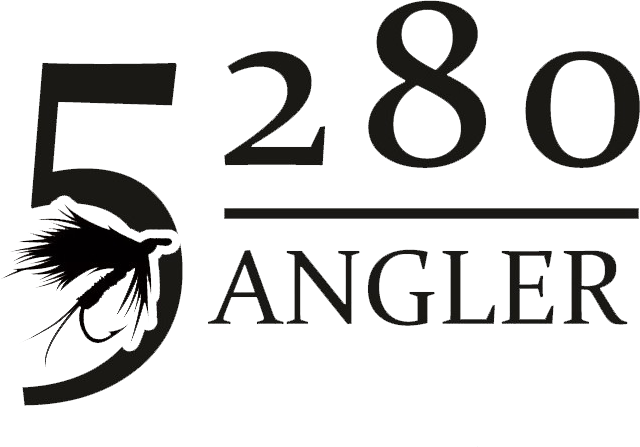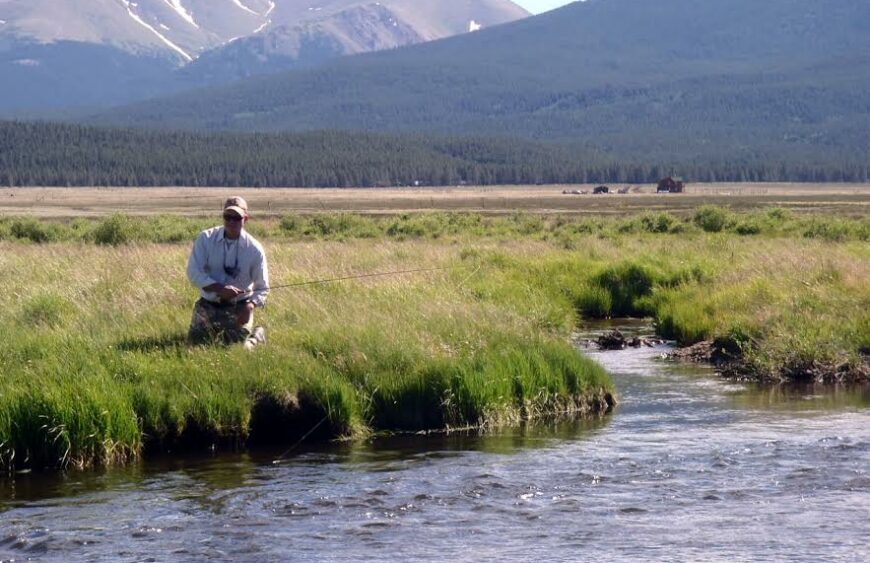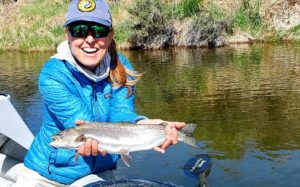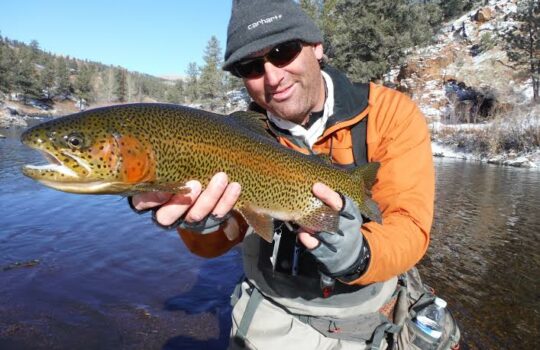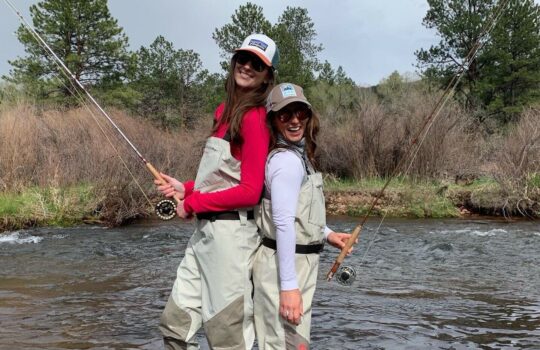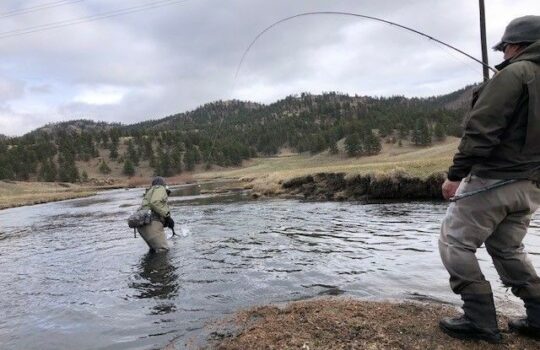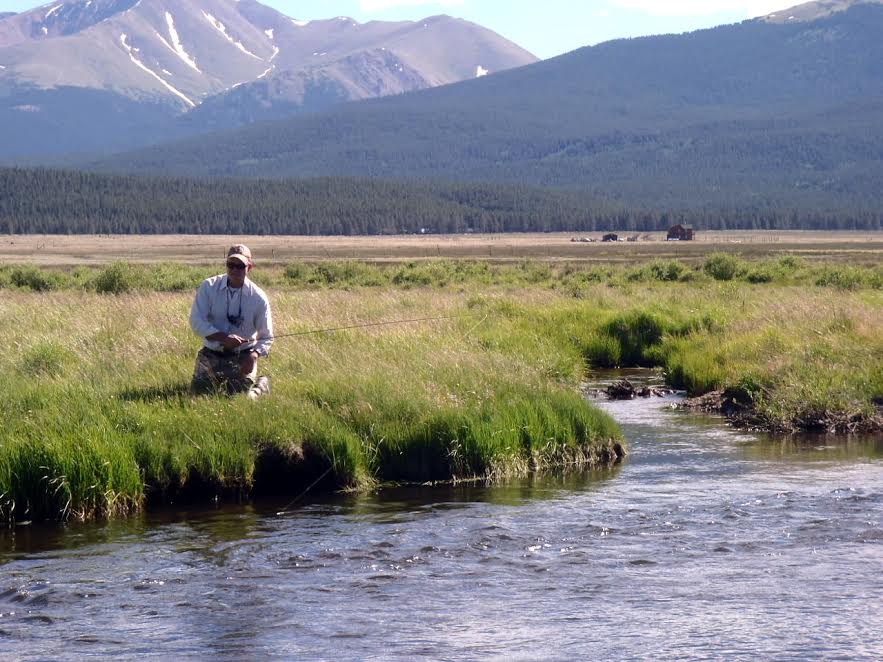
by guide Tom Caprio – follow Tom on Instagram @tomcaprioflyfishing.
Fly fishing can be complicated and confusing. Hatches change during the day and throughout the year, fish move around, and there are thousands of fly patterns. How can you simplify things?
Fortunately there are some general truths that hold up in most situations. Trout are top predators, and Mother Nature provides for them throughout the year. Though there are exceptions to every rule regarding fly selection, rigging, presentation, and location, looking at seasonal changes is key to putting the pieces together on the water.
Runoff: Late May- Late June:
When the water is high and visibility low, energy efficient trout will be in slower water, usually right along the bank. How convenient 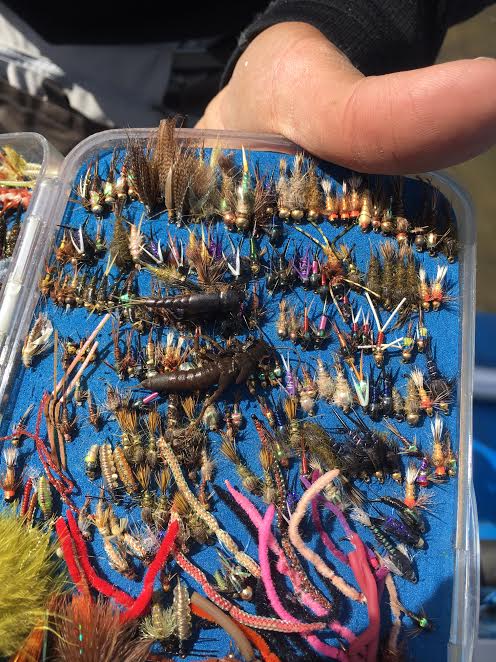 for the trout that salmonflies and other large stoneflies crawl right in front of them on their way to shore to hatch. High water also scours other big food sources from the river bottom such as aquatic worms, scuds, caddis larva, and craneflies. And, earthworms get washed in from the banks In off color/ murky or deep water it’s best to use darker flies whose profile is more visible to the fish.
for the trout that salmonflies and other large stoneflies crawl right in front of them on their way to shore to hatch. High water also scours other big food sources from the river bottom such as aquatic worms, scuds, caddis larva, and craneflies. And, earthworms get washed in from the banks In off color/ murky or deep water it’s best to use darker flies whose profile is more visible to the fish.
Baitfish and baby trout also hang out in the slower water making for easy pickings. Like all predators, trout pick on the weak/ vulnerable for an easy, high calorie meal, so an erratically stripped streamer that imitates a baitfish can evoke a vicious strike.
During runoff watch flows carefully. When river flows stabilizes for a day or two (such as after a cold front which slows down snowmelt), the water clears marginally, and typically fish go on a feeding frenzy. This can be some of the best fishing of the season. Fish are close to the bank and hungry. Big stonefly dry flies can be very effective and, with the better visibility fish may also key in on some of the smaller hatching insects that weren’t visible in the turbid water.
Post Run-Off: Late June – mid July:
After runoff fish need to replace weight lost from fighting big currents and mother nature does not disappoint providing endless hatches throughout the day. Caddis, pmds, golden stoneflies, yellow sallies, and drakes are all on the menu. During hatches fish will move to the ‘buffet table’ – shallower and faster riffle water – to get the most calories possible. Or, they will move higher in the water column to follow the hatch towards the surface. Anglers should target areas where fish are actively feeding Dry and dry-dropper fishing can be outstanding during this time. And, since mayflies like clouds and caddis like sun, regardless of the weather, nature provides consistent hatches all day long.
“Dog Days” of summer: Late July- mid September
Low flows, warm water, and bright sunlight can make fishing challenging during this time. Fish will seek out cooler water so target 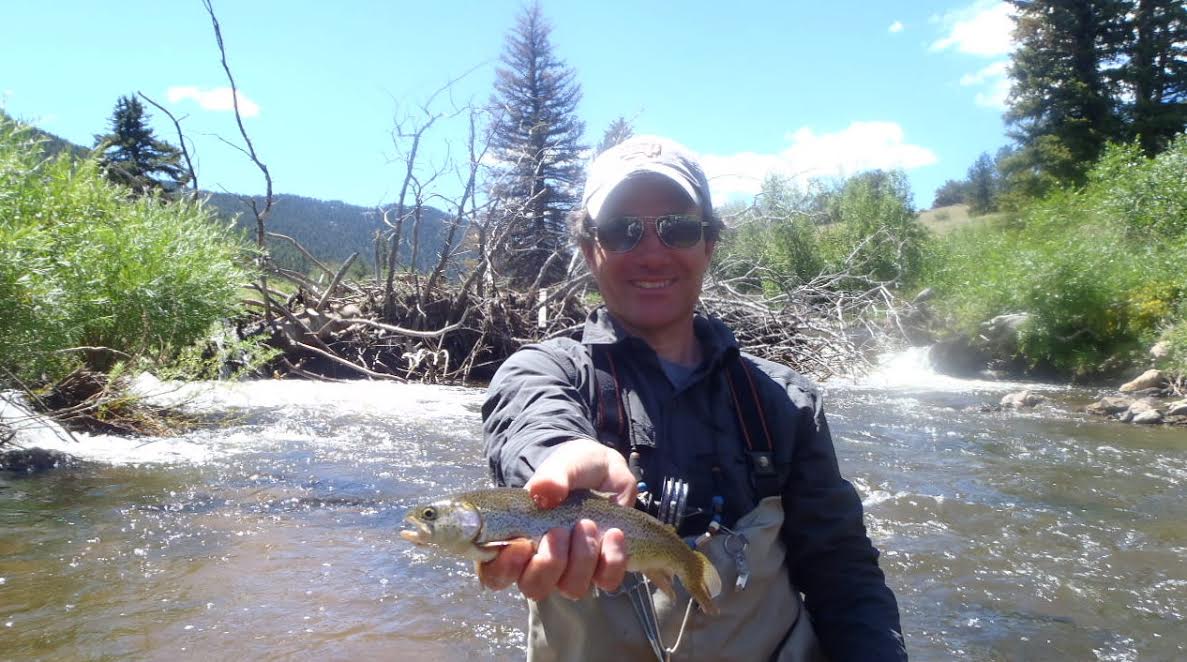 shady areas, deeper water, undercut banks, oxygenated riffles & rapids, cold water springs, or where colder tributaries enter the main river. Being sneaky is a good idea whenever you fish, but especially in low flows when trout are hypersensitive to movement and vibrations. During the “Dog Days” hatches usually are non-existent during the middle of the day, but when clouds appear in the afternoon, fish will be less spooky and this can trigger feeding. Mother Nature also provides afternoon wind – an avenue to blow meaty land based terrestrial insects into the water. Grasshoppers, ants, and beetles are all on the menu. Toss a terrestrial towards the banks or even in the middle of the river, as terrestrials can end up anywhere – trout will even take a submerged terrestrial! The hatches that occur will generally be during the cooler parts of the day – early morning and late afternoon/ evening, which coincidentally is when the fish will be more active. Swarms of trico mayflies will be present early in the morning and caddis will be around in the evening.
shady areas, deeper water, undercut banks, oxygenated riffles & rapids, cold water springs, or where colder tributaries enter the main river. Being sneaky is a good idea whenever you fish, but especially in low flows when trout are hypersensitive to movement and vibrations. During the “Dog Days” hatches usually are non-existent during the middle of the day, but when clouds appear in the afternoon, fish will be less spooky and this can trigger feeding. Mother Nature also provides afternoon wind – an avenue to blow meaty land based terrestrial insects into the water. Grasshoppers, ants, and beetles are all on the menu. Toss a terrestrial towards the banks or even in the middle of the river, as terrestrials can end up anywhere – trout will even take a submerged terrestrial! The hatches that occur will generally be during the cooler parts of the day – early morning and late afternoon/ evening, which coincidentally is when the fish will be more active. Swarms of trico mayflies will be present early in the morning and caddis will be around in the evening.
Next time you go fishing, take a step back and think of what makes sense based upon water flow, weather conditions, and season. The more you observe the more you’ll be able to fool Mother Nature and be a more successful fly angler.
